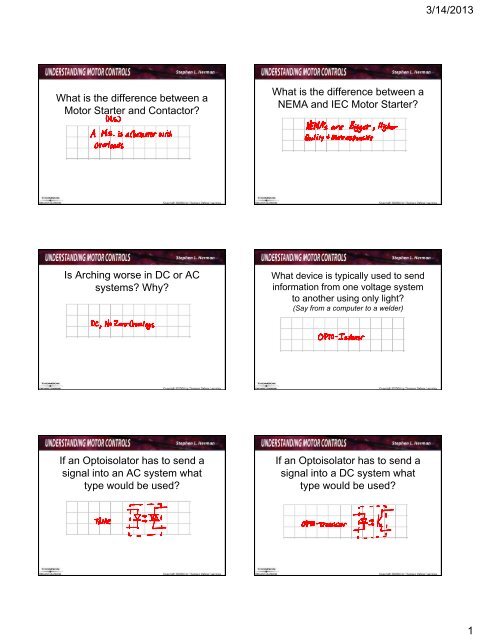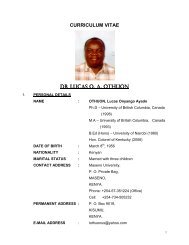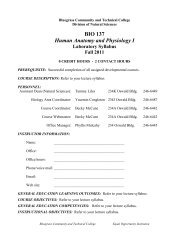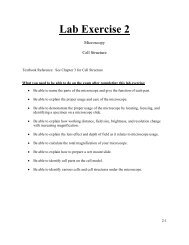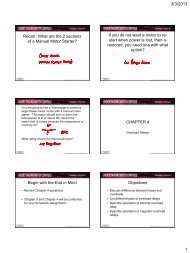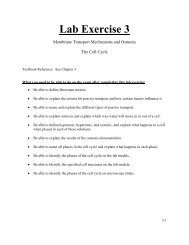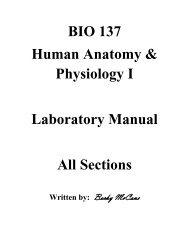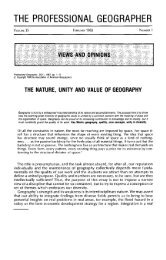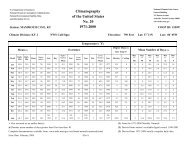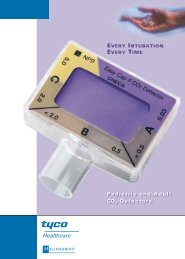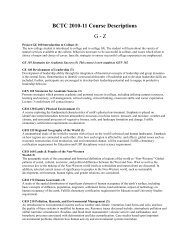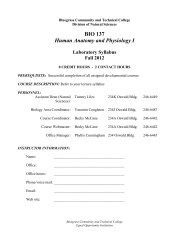What is the difference between a Motor Starter and Contactor? What ...
What is the difference between a Motor Starter and Contactor? What ...
What is the difference between a Motor Starter and Contactor? What ...
Create successful ePaper yourself
Turn your PDF publications into a flip-book with our unique Google optimized e-Paper software.
<strong>What</strong> <strong>is</strong> <strong>the</strong> <strong>difference</strong> <strong>between</strong> a<br />
<strong>Motor</strong> <strong>Starter</strong> <strong>and</strong> <strong>Contactor</strong>?<br />
Is Arching worse in DC or AC<br />
systems? Why?<br />
If an Opto<strong>is</strong>olator has to send a<br />
signal into an AC system what<br />
type would be used?<br />
<strong>What</strong> <strong>is</strong> <strong>the</strong> <strong>difference</strong> <strong>between</strong> a<br />
NEMA <strong>and</strong> IEC <strong>Motor</strong> <strong>Starter</strong>?<br />
<strong>What</strong> device <strong>is</strong> typically used to send<br />
information from one voltage system<br />
to ano<strong>the</strong>r using only light?<br />
(Say from a computer to a welder)<br />
If an Opto<strong>is</strong>olator has to send a<br />
signal into a DC system what<br />
type would be used?<br />
3/14/2013<br />
1
<strong>What</strong> are some advantages <strong>and</strong><br />
d<strong>is</strong>advantages of SSRs over<br />
Magnetic Control Relays?<br />
Begin with <strong>the</strong> End in Mind<br />
• Review Chapter 6 questions<br />
• Chapter 5 <strong>and</strong> Chapter 6 will be combined<br />
for one homework assignment.<br />
<strong>What</strong> <strong>is</strong> a Transformer?<br />
• A magnetic machine used to ra<strong>is</strong>e <strong>and</strong><br />
lower alternating voltage or current<br />
– Only works on AC<br />
CHAPTER 6<br />
The Control Transformers<br />
Transformer Fundamentals<br />
3/14/2013<br />
2
The Turns Ratio (1)<br />
• The main relationship <strong>between</strong><br />
<strong>the</strong> voltage <strong>and</strong> current going to<br />
<strong>and</strong> from a transformer <strong>is</strong> <strong>the</strong><br />
“Turns Ratio” (N)<br />
N<br />
N<br />
p<br />
s<br />
E<br />
E<br />
P<br />
S<br />
I<br />
I<br />
S<br />
P<br />
Power<br />
Step-Down Connection<br />
13<br />
17<br />
Turns Ratio (2)<br />
Normally <strong>the</strong> Turns Ratio <strong>is</strong> expressed<br />
as a ratio If <strong>the</strong> Primary Voltage <strong>is</strong> 120<br />
V, <strong>and</strong> <strong>the</strong> secondary Voltage <strong>is</strong> 24V,<br />
<strong>the</strong> turns ratio <strong>is</strong> “5 to 1” (5:1)<br />
N<br />
E<br />
E<br />
P<br />
S<br />
120V<br />
24V<br />
5<br />
" 5:<br />
1"<br />
The First Law of<br />
Thermodynamics applies<br />
• “Energy <strong>is</strong> nei<strong>the</strong>r lost nor destroyed”<br />
• Means that Energy In = Energy Out or<br />
“Power In = Power Out”<br />
VA<br />
IN<br />
VA<br />
OUT<br />
Step-Up Connection<br />
16<br />
18<br />
3/14/2013<br />
3
Multiple Tap Transformers<br />
Allow user to adjust for changes in primary voltage<br />
Control Transformer Label<br />
With 120V on <strong>the</strong> secondary, how much<br />
current will th<strong>is</strong> transformer supply?<br />
Answer:<br />
• First you need to step <strong>the</strong> Voltage down<br />
from 480V to 120V (4:1)<br />
• Second, <strong>the</strong> secondary has to supply:<br />
• 500mA x 4 = 2A<br />
• 250mA x 1 = 250 mA<br />
• 100mA x 6 = 600mA<br />
• Total = 2.85A<br />
19<br />
Multiple Tap Control Transformer<br />
With Label<br />
Question:<br />
• You need to power a control cabinet that<br />
will operate 4 <strong>Motor</strong> <strong>Starter</strong>s, 6 Pilot lights,<br />
<strong>and</strong> an E-Stop Relay for a 480V motor<br />
circuit. If each MS Coil draws 500mA,<br />
each light 100mA <strong>and</strong> <strong>the</strong> E-Stop 250mA,<br />
what size transformer do you need?<br />
Answer Continued:<br />
• Calculate <strong>the</strong> KVA (Power)<br />
• 2.85A X 120V = 342VA<br />
• You should up-size it to <strong>the</strong> next available<br />
• (500 VA or .5KVA)<br />
You need a 480V to 120V, .5KVA<br />
Transformer<br />
20<br />
3/14/2013<br />
4
The Control Transformer (1 of 6)<br />
• Control transformers are used to step<br />
down load voltages of 240V <strong>and</strong> 480V to a<br />
control circuit voltage of 120V.<br />
The Control Transformer (3 of 6)<br />
• Primary connected for 480V<br />
The Control Transformer (5 of 6)<br />
• Metal links used to make a 240-volt<br />
connection<br />
The Control Transformer (2 of 6)<br />
• Primary connected for 240V<br />
The Control Transformer (4 of 6)<br />
• Primary leads are crossed.<br />
The Control Transformer (6 of 6)<br />
• Metal link used to make a 480-volt<br />
connection<br />
3/14/2013<br />
5
Transformer Protection<br />
• Fuses <strong>and</strong> circuit breakers can be used to<br />
protect <strong>the</strong> transformer.<br />
• Requirements are l<strong>is</strong>ted in <strong>the</strong> NEC<br />
Section 430.72(c), 240.6.<br />
• Usually Transformers are fused on <strong>the</strong><br />
Primary <strong>and</strong> Secondary sides, though<br />
Primary Fusing alone <strong>is</strong> allowable.<br />
Toyota Fusing (When a blown fuse can cost<br />
$20,000 a minute)<br />
Usually 2 fuses are<br />
used on <strong>the</strong> primary<br />
because 2 lines are<br />
used.<br />
One side of <strong>the</strong><br />
secondary <strong>is</strong> ei<strong>the</strong>r<br />
grounded or fused<br />
Grounding <strong>and</strong> Floating<br />
Control Systems (2 of 4)<br />
• Voltage can be read by connecting one meter lead to<br />
any grounded point of system.<br />
Transformer Fusing<br />
• If transformers are fused on <strong>the</strong> primary<br />
alone, <strong>the</strong> fuse will have to be smaller than<br />
if it <strong>is</strong> fused on both <strong>the</strong> primary <strong>and</strong><br />
secondary.<br />
• The primary fuse may be left out if <strong>the</strong><br />
system protection <strong>is</strong> sized for than <strong>the</strong><br />
primary fuse rating would be.<br />
• Fusing may be left out for small<br />
transformers in “Superv<strong>is</strong>ed Locations.”<br />
Grounding <strong>and</strong> Floating<br />
Control Systems (1 of 4)<br />
• When one side of <strong>the</strong> secondary winding <strong>is</strong><br />
grounded, <strong>the</strong> control circuit <strong>is</strong> a grounded system.<br />
Grounding <strong>and</strong> Floating<br />
Control Systems (3 of 4)<br />
• When secondary system <strong>is</strong> not grounded, it <strong>is</strong> a<br />
floating system. No voltage would be read to ground.<br />
3/14/2013<br />
6
Grounding <strong>and</strong> Floating<br />
Control Systems (4 of 4)<br />
• Voltage will be read:<br />
Connect <strong>the</strong> transformer below<br />
Connect <strong>the</strong> transformer below Connect <strong>the</strong> transformer below<br />
Summary<br />
• In th<strong>is</strong> chapter, we d<strong>is</strong>cussed:<br />
– The use of control transformers in a control<br />
circuit<br />
– How to connect a control transformer for<br />
<strong>the</strong> operation on a 240- or 480-volt system<br />
– Grounded <strong>and</strong> floating control systems<br />
– Control transformer protection<br />
3/14/2013<br />
7


